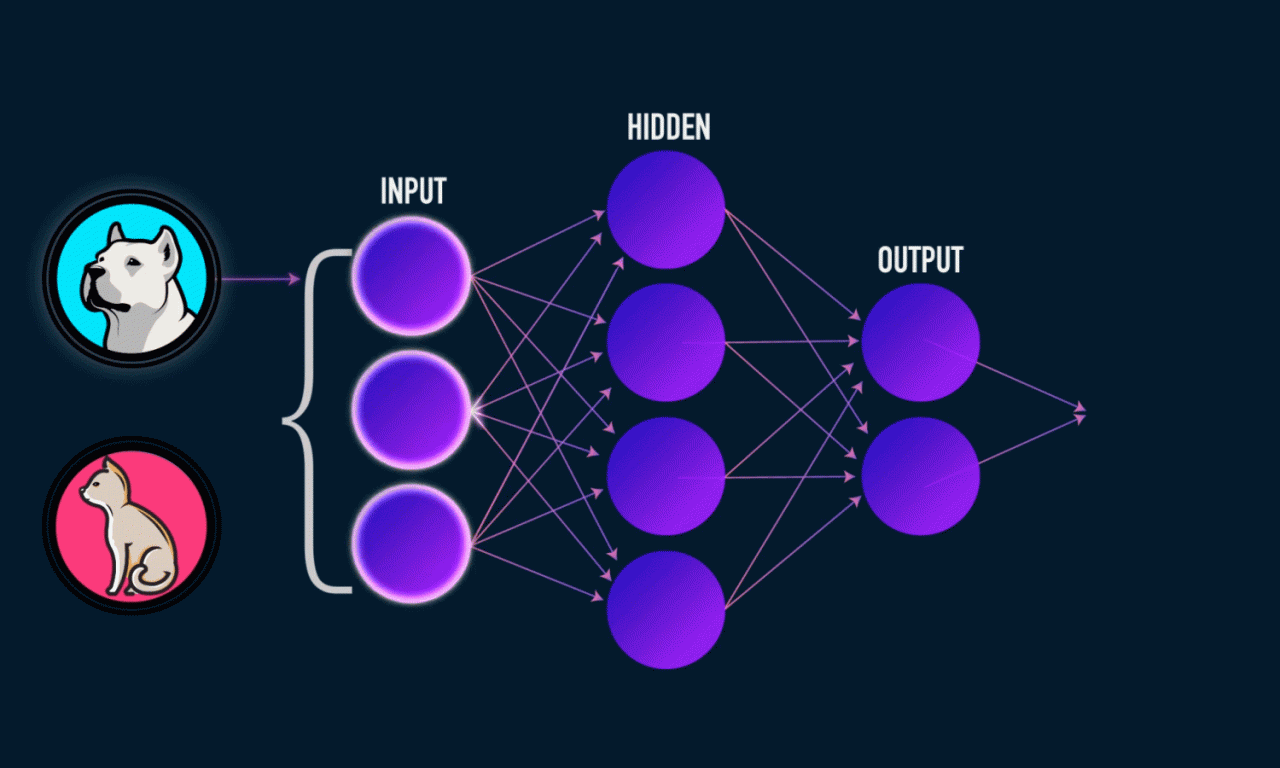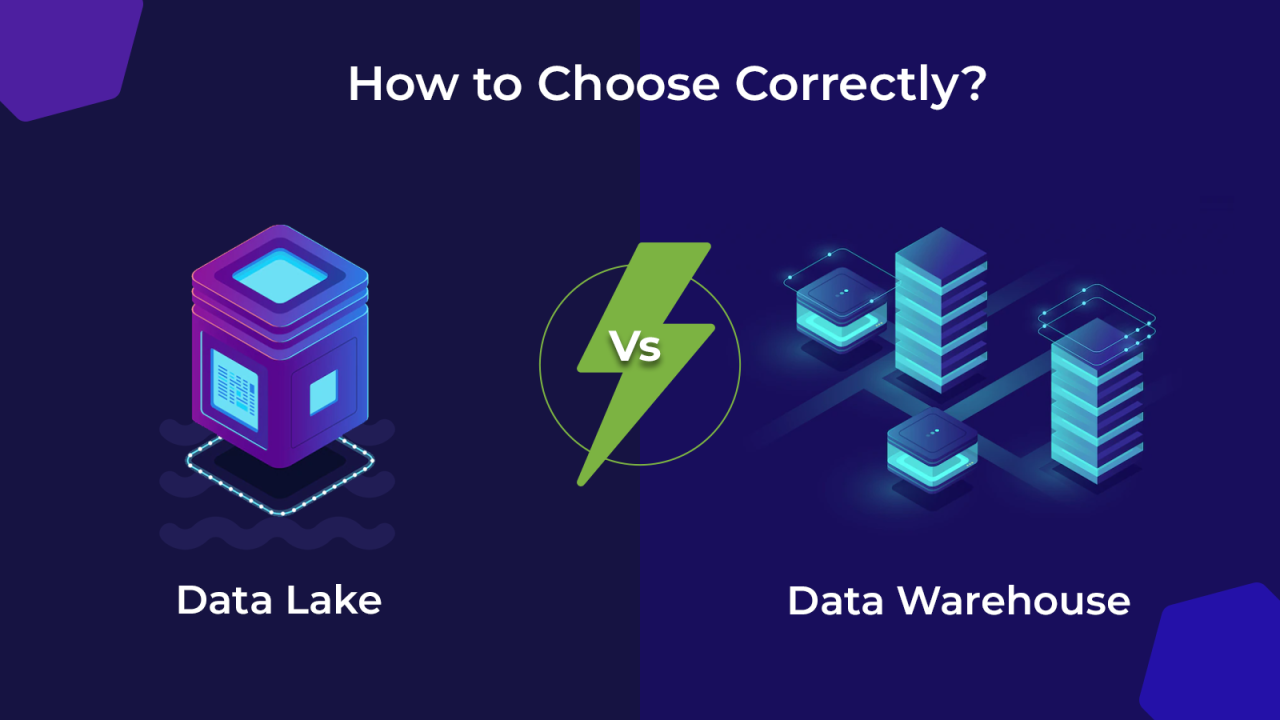The backbone of modern communication – from the internet we browse to the mobile calls we make – has traditionally relied on specialized, proprietary hardware. Routers, firewalls, load balancers, and other network appliances were once physical boxes, each performing a dedicated function. However, a profound transformation is sweeping through this critical domain: Network Functions Virtualization (NFV). This groundbreaking paradigm decouples network functions from their dedicated hardware, allowing them to run as software applications on standard, off-the-shelf servers. This isn’t merely a technical upgrade; it’s a fundamental reimagining of network architecture. By enabling agility, scalability, cost-efficiency, and unprecedented flexibility, NFV is driving a quiet revolution that unveils the future of networking, as network functions truly go virtual.
Understanding the Shift: From Hardware-Centric to Software-Defined Networks
To truly grasp the significance of NFV, it’s essential to understand the historical context of network architecture and the limitations that drove the industry towards virtualization.
A. The Legacy of Hardware-Centric Networking
For decades, networking relied on a model where each specific network function was tied to a dedicated piece of hardware.
- Proprietary Appliances: For every network task – routing, firewalling, intrusion detection, VPN termination, load balancing – a service provider or enterprise had to purchase a specialized, proprietary appliance from a vendor. These were purpose-built devices, often running custom operating systems.
- Vendor Lock-in: This model often led to significant vendor lock-in. Once an organization invested in a particular vendor’s hardware, it was difficult and expensive to switch, limiting negotiation power and hindering innovation from other providers.
- High Capital Expenditure (CapEx): Acquiring and maintaining these specialized appliances involved substantial upfront capital expenditure. Expanding network capacity meant buying and installing more physical boxes, a slow and costly process.
- Operational Complexity: Managing a vast array of disparate hardware appliances, each with its own management interface and specific configuration requirements, was inherently complex and prone to human error. Troubleshooting required deep expertise in multiple vendor-specific technologies.
- Lack of Agility and Scalability: Deploying new network services or scaling existing ones was a time-consuming affair. It involved ordering new hardware, waiting for delivery, physically installing it in data centers, and then manually configuring it. This lack of agility significantly slowed down service rollout and responsiveness to changing market demands.
- Underutilization of Resources: Dedicated hardware appliances were often provisioned for peak load, meaning they sat largely underutilized during off-peak periods, representing wasted computing resources and capital.
B. The Rise of Software-Defined Networking (SDN)
The concept of Software-Defined Networking (SDN) emerged as a precursor and complementary technology to NFV. SDN separates the network’s control plane (which dictates how traffic flows) from the data plane (which actually forwards the traffic).
- Centralized Control: SDN allows network intelligence and control to be centralized in a software-based controller, rather than being distributed across individual network devices.
- Programmability: This separation enables network programmability, allowing administrators to configure, manage, and optimize network resources dynamically through software, rather than manually configuring each device.
- Limitations (for NFV’s purpose): While SDN provided centralized control and programmability, it didn’t directly address the issue of the underlying proprietary hardware for network functions. It primarily focused on traffic forwarding paths, not the services like firewalls or load balancers themselves. This created a need for NFV.
C. The Advent of Network Functions Virtualization (NFV)
NFV was formally proposed by a group of telecom operators in 2012, recognizing the limitations of dedicated hardware and inspired by the success of server virtualization in data centers.
- Decoupling Hardware and Software: NFV’s core idea is to decouple network functions from proprietary hardware. Instead, these functions (e.g., routing, firewalling, deep packet inspection) are implemented as software components called Virtual Network Functions (VNFs).
- Running on Commodity Hardware: These VNFs run on standard, off-the-shelf high-volume servers (often referred to as ‘commodity’ or ‘white-box’ servers), virtualized using hypervisors (like VMware ESXi, KVM, Hyper-V) or container technologies.
- Network Functions Virtualization Infrastructure (NFVI): This refers to the underlying compute, storage, and networking resources (hardware and hypervisor/container runtime) that host the VNFs.
- Management and Orchestration (MANO): A critical NFV component, MANO frameworks provide the tools and processes for managing the lifecycle of VNFs (instantiation, scaling, termination) and orchestrating complex network services composed of multiple VNFs.
- Dynamic Service Chaining: NFV enables the creation of ‘service chains’ where traffic can be dynamically routed through a sequence of VNFs (e.g., firewall -> IDS -> load balancer) depending on the specific service requirements, all defined and managed in software.
NFV fundamentally transforms network services from static, hardware-bound appliances into flexible, dynamic, software-defined components, revolutionizing network deployment and operations.
Core Components and Architecture of NFV
A comprehensive NFV architecture involves several interconnected layers and components that work in synergy to virtualize and manage network functions.
A. Virtual Network Functions (VNFs)
These are the actual network functions that have been virtualized. Instead of a dedicated hardware appliance, a VNF is a software application that performs a specific network task.
- Examples: Virtual routers, virtual firewalls, virtual load balancers, virtual Intrusion Detection Systems (vIDS), virtual VPN gateways, virtual Content Delivery Networks (vCDN), virtual Packet Gateways (vPGW) in mobile networks, virtual Customer Premise Equipment (vCPE).
- Packaging: VNFs are typically packaged as virtual machine images or increasingly as containers, making them portable and deployable across various virtualization platforms.
- Stateless vs. Stateful: While many VNFs are designed to be stateless for easier scaling, some inherently need to maintain state (e.g., firewall sessions). Managing stateful VNFs across a distributed environment adds complexity.
B. Network Functions Virtualization Infrastructure (NFVI)
The NFVI is the environment upon which VNFs run. It provides the necessary computing, storage, and networking resources.
- Compute: Standard, high-volume x86 servers that host the virtualization layer.
- Storage: Commodity storage solutions (DAS, SAN, NAS) that provide persistent storage for VNF images, data, and logs.
- Networking: The physical network infrastructure (switches, routers) that connects the NFVI nodes and allows traffic to flow to and from the VNFs. This often leverages SDN principles for efficient data plane forwarding.
- Virtualization Layer: A hypervisor (e.g., KVM, VMware ESXi, Hyper-V) or container orchestration platform (e.g., Kubernetes, OpenShift) that abstracts the underlying hardware and allows multiple VNFs to run in isolated environments on the same physical server.
C. Management and Orchestration (MANO) Framework
The MANO framework is the ‘brain’ of the NFV ecosystem, responsible for managing the entire lifecycle of VNFs and orchestrating network services. The European Telecommunications Standards Institute (ETSI) has defined a reference architecture for MANO.
- NFV Orchestrator (NFVO): Responsible for orchestrating network services (which can be composed of multiple VNFs) and managing network service lifecycle (creation, scaling, termination). It translates high-level service requests into resource requirements for VNFs.
- VNF Manager (VNFM): Manages the lifecycle of individual VNFs (instantiation, scaling, healing, termination). It interacts with the NFVI to deploy and manage VNF instances.
- Virtual Infrastructure Manager (VIM): Manages the NFVI resources (compute, storage, network). It acts as the interface between the MANO layer and the virtualization layer (e.g., OpenStack, VMware vCenter).
- Operations Support Systems/Business Support Systems (OSS/BSS): Existing systems that handle customer orders, billing, network planning, and service assurance. MANO integrates with these to automate service delivery.
- Policy and Analytics: Components that define rules for VNF behavior, scaling policies, and collect performance metrics and logs for operational insights and optimization.
D. Service Chaining
NFV enables service chaining, which is the ability to connect multiple VNFs in a specific order to create a complete network service. For example, traffic might first go through a virtual firewall, then a virtual load balancer, and then an Intrusion Detection System. This chaining is dynamic and software-defined, allowing for flexible service creation and rapid deployment.
Transformative Advantages of Network Functions Virtualization
The adoption of NFV offers a comprehensive array of benefits that directly address the limitations of traditional hardware-centric networking, enabling unprecedented agility and efficiency.
A. Significant Cost Reduction
One of the most compelling advantages of NFV is the potential for substantial cost savings across both capital and operational expenditures.
- Reduced CapEx: By shifting from proprietary hardware appliances to standard, off-the-shelf commodity servers, organizations drastically reduce upfront capital expenditure on specialized equipment. This leverages economies of scale in standard server production.
- Lower OpEx:
- Automated Management: Automation of VNF deployment, scaling, and management reduces manual effort and staffing costs.
- Reduced Power and Cooling: Consolidating multiple network functions onto fewer physical servers leads to lower energy consumption and reduced cooling requirements in data centers.
- Simplified Operations: A unified software-defined management plane simplifies network operations, reducing the complexity of managing disparate hardware appliances.
- Optimized Resource Utilization: Virtualization allows for dynamic allocation of resources to VNFs based on actual demand. This means fewer underutilized resources, as capacity can be pooled and shared across multiple functions, maximizing hardware efficiency.
B. Enhanced Agility and Faster Service Deployment
NFV dramatically accelerates the deployment of new network services and the modification of existing ones, crucial for competitive advantage.
- Rapid Service Rollout: Instead of weeks or months waiting for hardware procurement, installation, and manual configuration, new VNFs can be provisioned and activated in minutes through automated software orchestration. This drastically reduces time-to-market for new services.
- Dynamic Scaling: VNFs can be automatically scaled up or down in response to fluctuating demand, ensuring optimal performance during peak times and cost efficiency during off-peak periods. This elasticity is fundamental for modern cloud-native applications.
- Faster Feature Iteration: The software-defined nature of VNFs allows for faster development, testing, and deployment of new features or updates to network functions, enabling continuous improvement.
- Service Customization: NFV makes it easier to customize network services for specific customers or use cases, enabling tailored offerings with greater flexibility than fixed hardware.
C. Improved Network Resilience and High Availability
NFV inherently enhances the robustness and reliability of network infrastructure through virtualization and automation.
- Automated Healing: If a VNF instance fails, the MANO system can automatically detect the failure and spin up a new instance on a healthy server, minimizing service disruption and reducing downtime.
- Reduced Single Points of Failure: Workloads can be distributed across multiple commodity servers, so the failure of a single physical server does not bring down the entire network function.
- Traffic Isolation: VNFs can be run in isolated virtual environments, preventing issues in one function from affecting others, enhancing overall system stability.
- Disaster Recovery: Entire network service chains can be quickly instantiated in different geographical locations in the event of a regional disaster, enabling faster and more efficient disaster recovery.
D. Greater Flexibility and Vendor Independence
NFV breaks down the traditional vendor lock-in associated with proprietary hardware.
- Choice of Software Vendors: Organizations can choose VNFs from various software vendors, fostering competition and innovation. They are no longer tied to a single hardware provider for a specific function.
- Mix-and-Match Components: Ability to mix and match VNFs from different vendors and run them on generic hardware, allowing for best-of-breed solutions rather than being limited to a single ecosystem.
- Open Source Opportunities: NFV encourages the development and use of open-source VNF software and MANO frameworks (e.g., OpenStack, Open Daylight, ONAP), fostering a more open and innovative ecosystem.
E. Simplified Operations and Management
The software-defined nature of NFV simplifies complex network operations.
- Centralized Management: MANO frameworks provide a unified, centralized point of control for managing all VNFs and network services, replacing the need to individually configure disparate physical boxes.
- Abstraction of Hardware: Network engineers can focus on designing and deploying network services through software interfaces, abstracting away the complexities of underlying hardware specifics.
- Infrastructure as Code (IaC): NFV environments are well-suited for Infrastructure as Code, where network services and their components are defined in machine-readable code, enabling consistent deployments and version control.
Key Use Cases and Applications of Network Functions Virtualization
NFV is being adopted across a wide range of sectors, particularly by telecom operators and large enterprises, to deliver a new generation of agile and cost-effective network services.
A. Telco Cloud and 5G Core Networks
Telecommunication operators are at the forefront of NFV adoption, virtualizing their core network functions to build more agile and scalable infrastructures for 5G and beyond.
- Virtual Evolved Packet Core (vEPC): Virtualizing key components of 4G/LTE mobile core networks (e.g., Mobility Management Entity, Serving Gateway, Packet Data Network Gateway) to enable more flexible and scalable mobile broadband services.
- 5G Core Network (5GC): The 5G core network is inherently designed for virtualization, using cloud-native network functions (CNFs) that run in containers. NFV principles are fundamental to its architecture, enabling network slicing and agile service delivery for diverse 5G use cases (e.g., ultra-reliable low-latency communication, massive IoT).
- Virtual Radio Access Network (vRAN): Virtualizing parts of the radio access network allows for greater flexibility and programmability, supporting the massive data demands of 5G.
- Network Slicing: NFV enables network slicing, where a single physical network can be partitioned into multiple isolated, virtual network slices, each optimized for a specific service (e.g., one slice for IoT, another for autonomous vehicles, another for enhanced mobile broadband).
B. Virtual Customer Premise Equipment (vCPE)
NFV is transforming how network services are delivered to enterprise customers, especially small and medium-sized businesses.
- Software-Defined WAN (SD-WAN): vCPE allows enterprises to deploy SD-WAN services (which optimize traffic routing over various network connections) as software on generic hardware at customer premises, replacing proprietary routers.
- Virtual Security Services: Delivering virtual firewalls, VPNs, and intrusion prevention systems as VNFs directly to customer sites, managed remotely by the service provider. This offers greater flexibility and reduces the need for expensive physical appliances.
- Managed Services: Service providers can offer a suite of managed network services to enterprises (e.g., managed routing, managed security) entirely virtually, providing faster activation and more agile service updates.
C. Data Center Networking and Cloud Environments
NFV principles are applied within large data centers and public cloud environments to manage and orchestrate network functions efficiently.
- Virtual Load Balancers: Deploying software-based load balancers (e.g., NGINX, HAProxy, cloud provider load balancers) as VNFs to distribute traffic efficiently across application servers.
- Virtual Firewalls: Implementing software-defined firewalls within cloud environments or private data centers to provide granular network segmentation and security policies for virtualized workloads.
- Network Segmentation: Using VNFs to create isolated network segments within a data center, enhancing security and compliance by controlling traffic flow between different application tiers or customer environments.
- Microsegmentation: Extending network segmentation down to the individual workload (VM or container) level, creating extremely granular security policies for east-west traffic within the data center.
D. Content Delivery Networks (CDNs)
NFV enhances the agility and scalability of CDNs, which are crucial for delivering web content efficiently to users globally.
- Virtual Caching Nodes: Deploying caching servers as VNFs at various points in the network to store content closer to end-users, reducing latency and offloading origin servers.
- Dynamic Content Routing: Using NFV and SDN to dynamically route user requests to the optimal caching node or content source based on real-time network conditions.
- Edge CDN Deployment: Deploying virtual CDN functions at the network edge to bring content even closer to the end-user, critical for emerging applications like AR/VR and live streaming.
Challenges and Considerations in NFV Adoption
Despite its transformative potential, the widespread adoption and successful implementation of NFV comes with its own set of significant challenges that organizations must strategically address.
A. Performance and Throughput Concerns
While commodity hardware has improved, achieving the same dedicated performance and throughput as highly optimized, purpose-built hardware appliances can be challenging, especially for demanding network functions.
- Software Overhead: Running network functions in a virtualized environment introduces a software layer (hypervisor, OS) that adds latency and reduces raw throughput compared to bare metal.
- Packet Processing Efficiency: Optimizing virtual machines or containers for high-speed packet processing requires specialized techniques (e.g., DPDK – Data Plane Development Kit, SR-IOV – Single Root I/O Virtualization) and careful tuning of the underlying hardware and software.
- Resource Contention: Multiple VNFs sharing the same physical resources (CPU, memory, network I/O) can lead to resource contention and performance degradation if not properly managed and isolated.
B. Management and Orchestration (MANO) Complexity
The promise of automated management in NFV is powerful, but building and operating the MANO framework itself is highly complex.
- Integration Challenges: Integrating various components of the MANO stack (NFVO, VNFM, VIM) from different vendors or open-source projects can be a daunting task, requiring deep expertise in orchestration tools and APIs.
- Interoperability Issues: Ensuring seamless interoperability between VNFs from different vendors and the underlying NFVI/MANO layers can be difficult due to varying standards implementations or proprietary interfaces.
- Operational Maturity: Operating a dynamic, software-defined network requires new operational models, skill sets, and processes. Teams need to transition from managing physical boxes to managing virtualized services, which is a significant cultural and technical shift.
C. Security in a Virtualized Environment
While NFV offers opportunities for enhanced security, it also introduces new security considerations.
- Hypervisor Security: The security of the hypervisor or container runtime is paramount, as a compromise at this layer could impact multiple VNFs.
- VNF Security: Ensuring that each VNF is properly secured, patched, and isolated from other VNFs running on the same host.
- Increased Attack Surface: A software-defined network can present a broader attack surface if not properly secured, as configurations and policies are exposed through APIs.
- Network Segmentation Complexity: While microsegmentation is a benefit, correctly implementing and managing granular network policies across a highly dynamic virtual environment is complex.
D. Vendor Lock-in (Revisited)
While NFV aims to reduce hardware vendor lock-in, it can introduce software or platform vendor lock-in if organizations become too reliant on a specific MANO provider or cloud platform for their NFV deployments. The promise of an open ecosystem still faces challenges.
E. Skill Gap and Workforce Transformation
The transition to NFV requires a new set of skills that combine traditional networking knowledge with expertise in virtualization, cloud computing, automation, and software development. Bridging this skill gap and transforming the existing workforce is a significant challenge for many organizations.
F. Regulatory and Compliance Landscape
For regulated industries (e.g., telecom, finance), ensuring that NFV deployments meet stringent regulatory and compliance requirements (e.g., data residency, network integrity, lawful intercept) can be complex, as existing regulations were often written with physical networks in mind.
G. Transitioning from Legacy Networks
For existing large organizations, migrating from deeply entrenched, hardware-centric legacy networks to a fully virtualized NFV infrastructure is a monumental undertaking. This involves careful planning, phased migration strategies, and managing coexistence of old and new systems without disrupting critical services.
Best Practices for Successful NFV Implementation
To successfully adopt Network Functions Virtualization and realize its full potential, organizations should adhere to a set of strategic best practices, focusing on planning, automation, and a strong operational foundation.
A. Start with a Clear Business Case and Phased Approach
Do not jump into NFV without a clear understanding of your business objectives (e.g., specific cost savings, faster service delivery for a new product, increased agility). Begin with well-defined pilot projects (e.g., vCPE for a specific customer segment, virtualizing a non-critical network function) to gain experience and demonstrate tangible ROI. Adopt a phased, incremental approach rather than a ‘big bang’ transition.
B. Embrace Automation and Infrastructure as Code (IaC)
Automation is the cornerstone of NFV’s benefits.
- Automate VNF Lifecycle: Leverage MANO tools to automate the instantiation, scaling, healing, and termination of VNFs.
- Infrastructure as Code: Define your NFVI resources (compute, storage, network) and VNF deployments using IaC tools (e.g., Terraform, Ansible, CloudFormation). This ensures consistent, repeatable deployments and enables rapid provisioning.
- Automated CI/CD for VNFs: Implement CI/CD pipelines for VNF software development and deployment, ensuring new features and security patches are delivered quickly and reliably.
C. Optimize for Performance with Cloud-Native Principles
While using commodity hardware, optimize your NFVI and VNF deployments for maximum performance.
- Leverage Cloud-Native VNFs (CNFs): Prioritize VNFs that are built as cloud-native containerized applications over traditional VMs where possible. CNFs offer faster startup times, lower resource overhead, and better integration with Kubernetes.
- Network Acceleration Technologies: Utilize technologies like DPDK (Data Plane Development Kit), SR-IOV (Single Root I/O Virtualization), and eBPF (extended Berkeley Packet Filter) to enhance packet processing speed and reduce latency in your NFVI.
- Microservices Architecture: Design complex network services using microservices principles, breaking them down into smaller, independently scalable VNFs.
- Hardware Optimization: Select commodity servers with appropriate CPU core counts, high-speed network interfaces (e.g., 25GbE, 100GbE), and sufficient memory to handle projected VNF workloads.
D. Prioritize End-to-End Security
Security must be an integral part of your NFV strategy from design to operation.
- Secure NFVI: Implement robust security for the underlying NFVI (hardware, hypervisor, OS) through hardening, regular patching, and strict access controls.
- VNF Isolation and Segmentation: Ensure strong isolation between VNFs running on the same host. Implement granular network segmentation and microsegmentation policies for VNF communication.
- Automated Security Testing: Integrate security scanning tools (e.g., container image scanners, IaC security scanners) into your CI/CD pipelines for VNFs and NFVI configurations.
- Continuous Monitoring and Threat Detection: Deploy comprehensive monitoring, logging, and SIEM solutions to detect security incidents and anomalies across your virtualized network environment.
E. Develop a Robust MANO Strategy
Invest significantly in your Management and Orchestration (MANO) layer.
- Standardization: Favor MANO solutions that adhere to ETSI NFV MANO standards to promote interoperability and reduce vendor lock-in.
- Integration Capabilities: Ensure your chosen MANO framework can seamlessly integrate with your existing OSS/BSS systems for service fulfillment, assurance, and billing.
- Policy-Driven Orchestration: Implement policy engines that allow for automated, policy-driven scaling, healing, and placement of VNFs based on business rules and performance metrics.
F. Invest in Workforce Transformation and Skill Development
Recognize that NFV requires new skills. Invest in comprehensive training programs for your network engineers and operations teams in areas such as:
- Virtualization Technologies: Hypervisors, containers, Kubernetes.
- Cloud Computing Concepts: Public and private cloud architectures.
- Automation and Scripting: Python, Ansible, Terraform.
- Software-Defined Networking (SDN) Principles: Programmable networks.
- DevOps and Site Reliability Engineering (SRE) Practices: Operationalizing software-defined infrastructure.
G. Foster an Open Ecosystem Mentality
Actively engage with the NFV ecosystem, including open-source projects (e.g., OpenStack, Open Baton, ONAP) and diverse VNF vendors. This promotes innovation, fosters competition, and allows you to build best-of-breed solutions tailored to your specific needs, avoiding single-vendor dependence.
The Future Trajectory of Network Functions Virtualization
The journey of NFV is far from complete. Its future trajectory is one of increasing sophistication, deeper integration, and a pivotal role in enabling the next generation of digital services.
A. Cloud-Native Network Functions (CNFs) Dominance
The industry is rapidly shifting from Virtual Machines (VMs) as the primary VNF deployment model to Cloud-Native Network Functions (CNFs) based on containers and Kubernetes.
- Greater Efficiency: CNFs offer even faster startup times, lower resource overhead, and better resource utilization than VMs.
- Kubernetes as the NFVI: Kubernetes is emerging as the preferred NFVI and VIM layer for next-gen networks, providing robust orchestration capabilities for CNFs.
- Enhanced Portability: CNFs are inherently more portable across different cloud environments (public, private, hybrid), increasing flexibility.
B. Greater Integration with SDN and AI/ML
The synergy between NFV and other advanced technologies will deepen.
- Closed-Loop Automation: Tighter integration between NFV’s MANO and SDN’s control plane, coupled with AI/ML, will enable truly closed-loop automation. AI will analyze network data, predict issues or optimize performance, and then automatically trigger changes in VNF scaling or service chains via MANO and SDN controllers.
- Intent-Based Networking: Users or business applications will define their desired network intent (e.g., “provide low-latency connectivity for this IoT application”), and AI-powered NFV/SDN systems will autonomously translate this into the necessary VNF deployments and network configurations.
- Predictive Network Operations: AI/ML will enable predictive maintenance for underlying NFVI hardware, proactive identification of network performance degradation, and automated anomaly detection across virtualized functions.
C. Network Slicing and Edge Computing for 5G+
Network slicing will become a mainstream reality for 5G and beyond, heavily reliant on NFV.
- Dynamic Slice Management: NFV will enable dynamic creation, management, and orchestration of network slices optimized for diverse applications (e.g., mission-critical communications, massive IoT, augmented reality) with guaranteed quality of service.
- Edge VNF Deployment: Deploying VNFs at the network edge (closer to end-users and devices) will become crucial for ultra-low latency applications (e.g., autonomous vehicles, industrial automation, immersive gaming). NFV will enable flexible edge cloud deployments.
- Compute-Network Convergence: A deeper convergence of compute and network functions at the edge, leveraging NFV principles to manage distributed processing closer to data sources.
D. Security Reinvention: Zero Trust and SASE
NFV will facilitate a radical reinvention of network security.
- Zero Trust Architecture: NFV allows for granular microsegmentation and policy enforcement, making it easier to implement Zero Trust principles where no entity (user or device) is trusted by default, regardless of its location.
- SASE (Secure Access Service Edge): The SASE model, which converges network security functions (e.g., firewall-as-a-service, secure web gateways) with WAN capabilities into a single cloud-delivered service, is fundamentally enabled by NFV and cloud-native principles.
- Automated Security Orchestration: Security policies will be fully automated and orchestrated as part of network service chains, adapting dynamically to threats and network changes.
E. Open-Source Dominance and Collaboration
The NFV ecosystem will continue its strong lean towards open-source technologies.
- Community-Driven Innovation: Open-source projects will drive much of the innovation in VNF development, MANO frameworks (e.g., ONAP, OpenStack, Kubernetes), and testing tools.
- Interoperability Standards: Collaborative open-source efforts will lead to more robust and widely adopted interoperability standards, reducing vendor lock-in and fostering a truly competitive ecosystem.
- DevNetOps: A strong integration of development, network operations, and security practices, with an emphasis on code-driven automation and continuous delivery across the network domain.
Conclusion
The journey of Network Functions Virtualization is a pivotal chapter in the ongoing digital transformation, as network functions truly go virtual. By decoupling network services from their hardware shackles, NFV has unleashed an unprecedented era of agility, scalability, and cost-efficiency in network architecture. It has transformed static, proprietary appliances into dynamic, software-defined components that can be rapidly provisioned, automatically scaled, and seamlessly managed.
While the path to full NFV maturity involves significant challenges—including optimizing performance, managing complex orchestration, addressing new security paradigms, and bridging skill gaps—the transformative benefits are too compelling for any organization to ignore. From enabling the hyper-connected world of 5G and accelerating service delivery for enterprises, to building more resilient and cost-effective data center networks, NFV is fundamentally reshaping the very infrastructure that powers our digital lives. The future of networking is inherently software-defined, intelligent, and flexible, and NFV is the essential blueprint leading us there, continuously unveiling new possibilities for an interconnected world.














